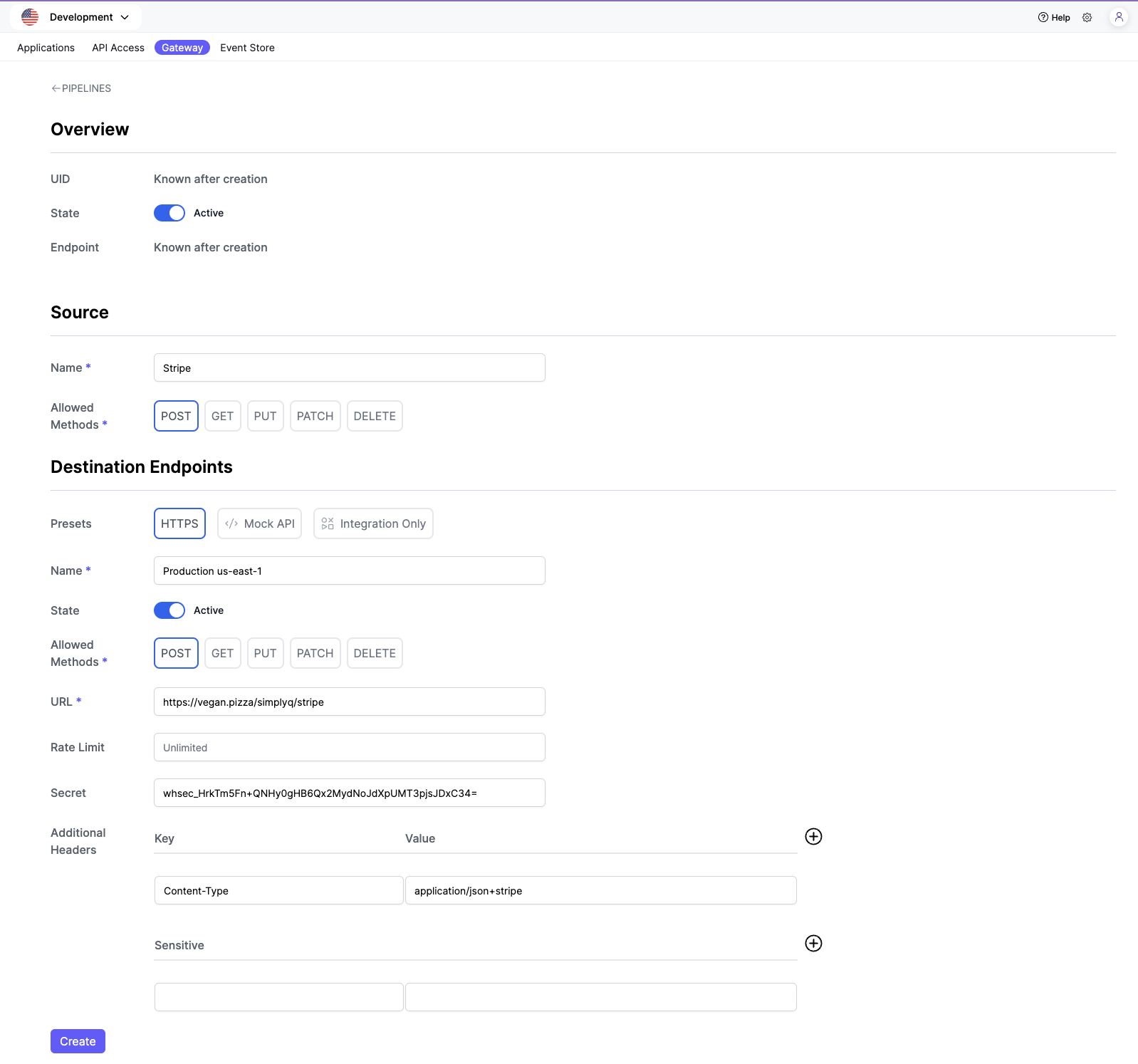Pipeline
A Pipeline is a concept used to define a series of stages that incoming webhook events pass through before being delivered to their final destination. A Pipeline currently consists of two stages: source and destination.
Source
The source configuration defines the rules applied on incoming events. Currently a source can be configured to filter incoming requests based on the HTTP method.
Destination Endpoints
The destination configuration defines the endpoints that the events ingested by the source will be delivered to. Currently the destination endpoints support the following presets:
HTTPS
The HTTPS endpoint allows you to deliver events to any HTTPS endpoint. The endpoint can be configured to use a custom HTTP headers, rate limit, secret and accepted HTTP methods. If you have selected multiple HTTP methods in the source configuration, you can select which methods the endpoint accepts.
Mock API
The Mock API endpoint allows you to deliver events to a mock API endpoint. The endpoint will accept any HTTP method and will return a 200 OK response with a JSON body containing the event payload.
Integrations Only
The Integrations Only preset allows you to skip delivery of the events as they will only be used as part of an integration such as the Event Store.
Create a Pipeline
- Navigate to the Pipelines page and click on the Create button as seein in the below screenshot.

2. Configure the source and destination endpoints as required and click on the **Create** button.

3. Once the pipeline is created, you will be redirected to the pipeline details page. There you can find the pipeline's Endpoint URL and Secret. You can use the endpoint URL to send events to the pipeline and the secret to verify the authenticity of the events.
